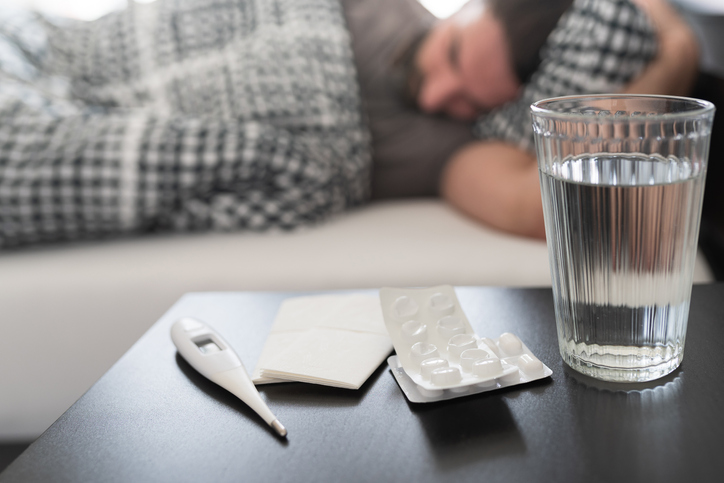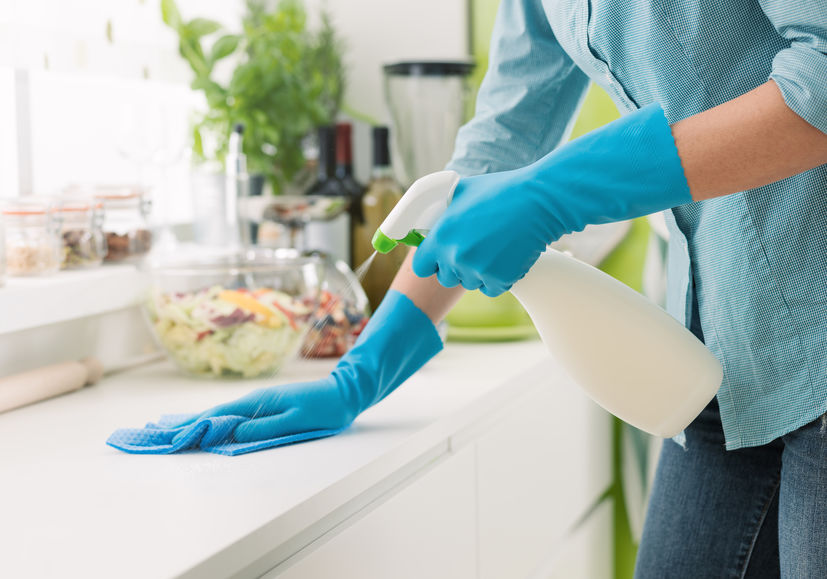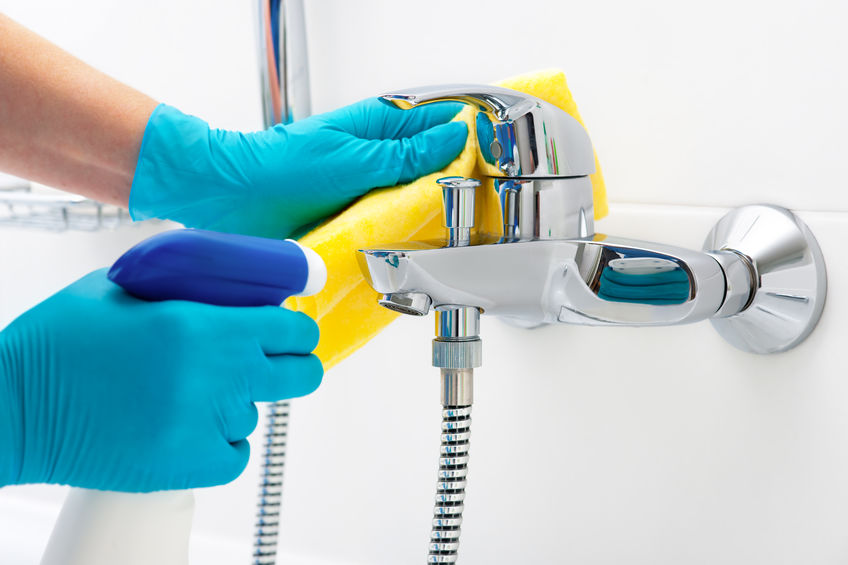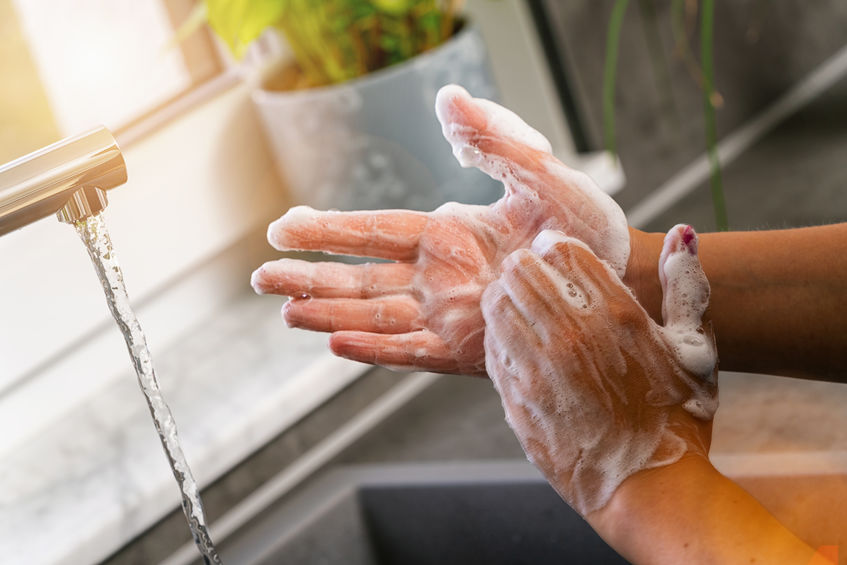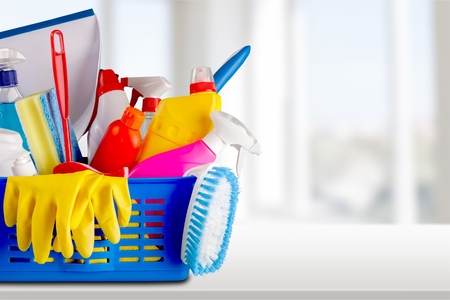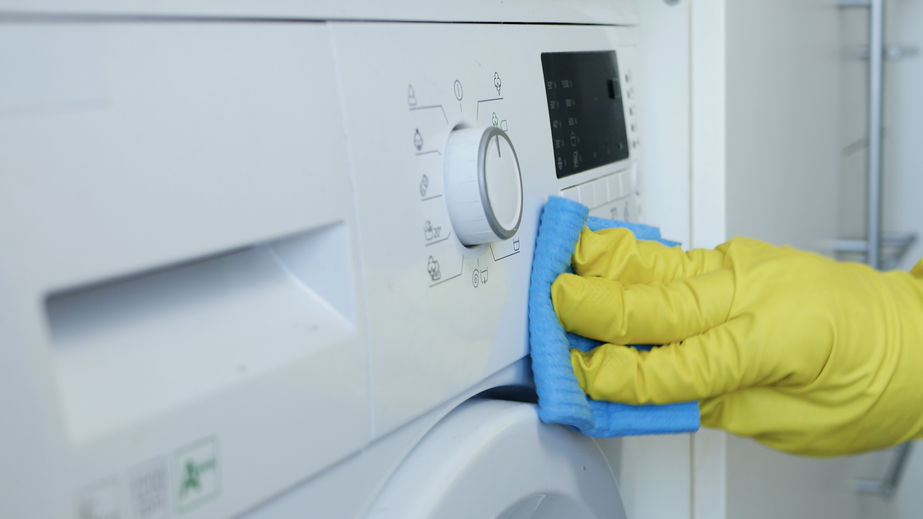Surface Disinfecting After Illness
Surface disinfecting after illness. The importance of surface disinfecting increases when someone in your home has the telltale signs of a cold or other viruses or complains of an upset tummy.
Begin cleaning and surface disinfecting in your home as soon as signs of illness pop up, and daily until symptoms disappear.
When someone in your home is sick, you can expect many facets of your daily routine to undergo some changes, including how you clean your house.
No matter how much you love someone, chances are, you don't want to share their cold or flu virus or any other infectious diseases, for that matter. Living with and caring for a sick child or partner means knowing how not to get sick yourself.
Take Care and Keep Everyone Safe
Surface disinfecting after illness. It's all about risk mitigation. You can't eliminate the risk entirely, but you can minimize it. When you do that, you're stacking the odds in your favor - of not getting sick, that is.
When anyone in your home is exhibiting the telltale signs of a cold, flu, or any contagious illness, priority number one is to prevent the disease from spreading to others in the home.
Without timely action on your part, if left unchecked, viral transmission can ricochet through your home at breakneck speed.
One recent study found that family members of people who had the flu and eventually got sick began showing symptoms within a mere 2.9 days of the first household diagnosis.
Beyond washing your hands frequently and correctly, daily surface disinfecting and cleaning is your best defense.
Flu viruses live on hard surfaces for up to 24 hours. Norovirus is commonly blamed for stomach bugs and can live on hard surfaces for up to two weeks.
Knowing how to destroy these hardy germs through surface disinfecting can keep sickness from spreading in your home.
Get Serious About Surface Disinfecting After Illness
By focusing your cleaning efforts on your home's frequently touched objects and surfaces, using a disinfectant cleaner as a weapon of good, and shooting to kill the nasty germs in and out of sight, you can win the battle of the bugs (and infectious germs) in your home.
What to put on your surface disinfecting target list? The usual frequently touched suspects, naturally: light switches, keyboards, remote controls, and doorknobs.
These places are often teeming with many of the more than 200 sneeze- and cough-inducing cold and flu viruses we see today.
Without your surface disinfecting intervention, these annoying interlopers can survive for hours on many hard surfaces in our homes, including plastic and metal surfaces and children's toys.
Hit Hard Surfaces
Cleaning the counters with soapy water can get rid of some germs and make things look tidy - and that may be just fine when everyone in your household is healthy.
However, cleaning alone won't cut it when someone has the flu or a stomach bug. You want to kill the germs, and water and mild cleaners won't do the trick.
When the task at hand requires killing tough viruses and bacteria - not bathing them, it's time to bring in the howitzers of the cleaning world: disinfectants.
I'm not implying you should ditch cleaning surfaces with soap and water. Surface cleaning removes dirt and grime that, if left intact, provides a significant barrier against the chemical properties of disinfectants, rendering them ineffective. Cleaning is just part one.
When cleaning and surface disinfecting counters, tabletops, doorknobs, and bed frames, take it one step at a time.
- Wash the surface with soap and water to first remove dirt and grime and clear the way for the disinfectant's work.
- Apply your disinfecting cleaner to the surface until visibly wet. Allow it to do its dirty work on the surface for at least 10 minutes. Rinse and wipe dry.
Surface Disinfecting After Illness
Look for a cleaner with the word disinfectant on the label. Ammonia and vinegar, contrary to popular opinion, do not kill bacteria or viruses.
For that, you'll need an EPA-certified disinfectant. When using a commercial cleaner, follow the directions for use found on the product label.
If you don't have a commercial disinfectant handy, mix your own with chlorine bleach and laundry detergent:
- 3/4 cup bleach
- 1 gallon warm water
- 1 tablespoon powdered laundry detergent.
When using a diluted bleach solution, freshness matters. Chlorine bleach loses its chemical cleaning properties when exposed to open air for extended periods. After mixing, a diluted bleach solution should be used within 24 hours to ensure freshness.
Surface Disinfecting With Homemade Bleach Solution
To disinfect using your homemade bleach solution, dip a paper towel or cotton cloth in the cleaning solution, and apply it to the surface until visibly wet.
Let it sit for at least 10 minutes. Rinse the surface clean and let dry. You can also use the bleach solution in a spray bottle for convenience.
According to the CDC, hydrogen peroxide is another safe and effective DIY way to kill bacteria, viruses, and fungi on hard nonporous surfaces.
For use as a disinfectant at home, use the 3 percent hydrogen peroxide found at your local grocery store or pharmacy. You can use it right out of the bottle; let sit on the surface for one minute before wiping it dry.
Rubbing alcohol with 70 percent concentration will kill most bacteria, fungi, and viruses, but it evaporates quickly. That quick evaporation means its best used on small and hard surfaces.
You'll need to keep the surface visibly wet for a minimum of 30 seconds to ensure the alcohol destroys all germs. It could be helpful for computer keyboards, remote controls, smartphones, and anything else with a touchscreen.
Room-by-Room Surface Disinfecting After Illness Guide
To stay on top of germs during cold and flu seasons or when someone in your home is sick, regularly disinfect high-touch surfaces or those the ill person has touched. Give special attention to surfaces in the ill person's bedroom and bathroom.
Critical surfaces to hit include bedside tables, countertops, sinks and faucet handles, remote controls and computer keyboards, doorknobs, light switches, tub or shower, and toilets (including the entire seat and the toilet handle).
Keep the Kitchen Safe
Pay close cleaning attention to the kitchen and its various surfaces. The kitchen is the room in which people tend to gather and touch things, and it is where food and drinks are prepared and often served. Bacteria and viruses can live on the surfaces here for days, even weeks.
Be a Careful Cook. To prevent spreading germs to the rest of the household, the sick person should not be the one who prepares meals for the rest of the family.
Even the most meticulous hand-washing may not be enough to keep everyone safe, especially from easily spread germs causing illnesses like the norovirus.
Stomach bug-causing viruses like unpleasant norovirus can easily wiggle their way into food and meal prep areas, given the slightest opportunity, and spread quickly through hand-to-mouth contact. If you're the one who's sick, for your family's sake, don't prepare meals or other food until you have been symptom-free for at least 48 hours.
Whoever does the food prep and cooking should disinfect everything touched, such as the refrigerator, microwave, other appliances, drawer handles, faucets, and stove knobs.
Surface Disinfecting After Illness To Bust Bedroom Germs
When you're sick, your bed is usually the go-to spot for some much-needed rest. But all that time spent horizontal with a bad cold or virus gives germs and bacteria plenty of time to get comfy, too.
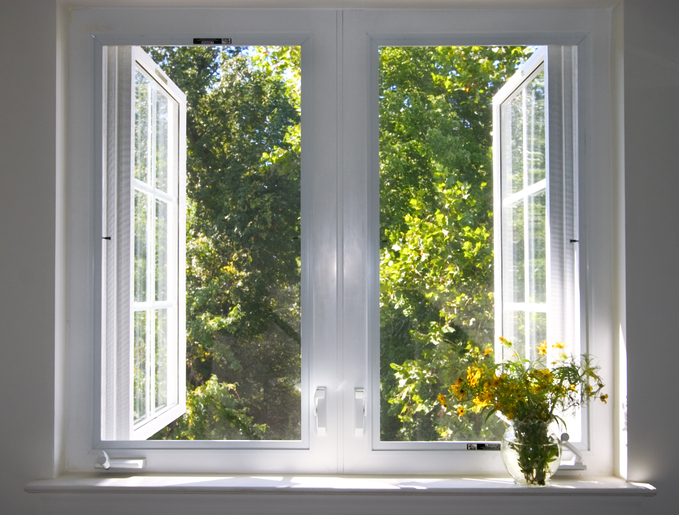 Surface disinfecting after illness.
Surface disinfecting after illness.Kick Germs Out of Bed. It's essential to sanitize the bed linens in the warmest water possible and dry thoroughly when the worst has passed. Sanitizing is especially important if you can't avoid sharing a bedroom with the sick person.
Change the pillowcase that your sick partner has coughed or sneezed on daily, and you might fare better. No need to change the other bed linens unless they get soiled.
Focus on High-Touch Spots. Clean and disinfect objects the sick person has come into contact with on an as-needed basis.
For example, if a sick person is only moving from the bed to the bathroom and back, pay close cleaning attention to the nightstand, the bathroom door handle, bedposts, changing tables, and anything else front and center that could potentially be germy.
Pacifiers and toys with hard surfaces without batteries and attached parts can go in the dishwasher.
Tackle the Trash. Use a lined wastebasket in the sick person's room to minimize contact between you and the germy contents inside when taking out the trash. Empty the sick room wastebasket bin at least once daily, replacing the bag each time with a fresh one.
Clear the Air. Dust can be extra irritating when someone is sick. Dust furniture around the room they are in, especially the headboard and the nightstand, and vacuum the floor every few days or more often if needed. Don't forget the corners and under the bed.
If the weather allows, open the windows to give stagnant germ-filled air a way out and usher fresh air in. They don't need to say open all day, just long enough to bring fresh air in and move infected air out.
Buff the Bathroom
Bathrooms are home to plenty of germs problem areas that only get germier when someone is sick. Give everything you encounter here a serious sanitizing.
Call in the disinfectant. Use a disinfectant cleaner on toothpaste tubes and toiletries handled by the sick person; the trash can; doorknobs; light switches; sink and shower handles' the toilet seat, lid, and handle; and the areas on the floor around the toilet.
Guard Toothbrushes. While you're there, clean everyone's toothbrushes with soap and water or in the dishwasher.
Alternatively, you could just replace them. You should be replacing them roughly every six months, anyway. If it's about that time, make that move.
If family members share a toothbrush holder, it is imperative to separate the infected person's toothbrush from the toothbrushes of others in the home who are not yet infected, so germs do not spread from one toothbrush to another due to proximity.
Clean Living Spaces
The family room and living room are popular gathering spots in many homes. And, where we go, our germs go, too.
We sit on the sofa, chill in chairs, channel search on the carpet, with all these surfaces collecting viruses and bacteria in the process.
Cover the risk. Keep contamination of upholstered furniture and accessories in these rooms to a minimum by covering these items and areas with washable sheets or blankets. Wash and change the protective throws frequently. Remove any decorative pillows or cover them with washable pillowcases.
Hit High-Touch Surfaces. Don't forget surface disinfecting when it comes to all the room's high-touch surfaces, including the television remote, phones, computer keyboards, and doorknobs leading in and out and to other rooms.
- Clean Home
- Clean
- Disinfecting After Sickness
